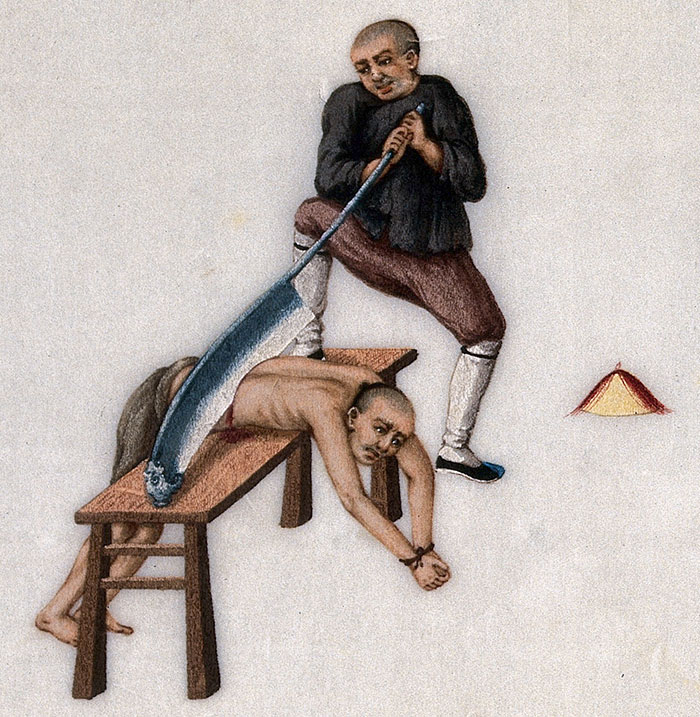
(credit: Wellcome Collection)
In Ancient China, there was a form of execution called waist chop. Just like its name, it entails a person being literally chopped in half from the waist.
It was reserved only for the most serious criminals since many people did not die immediately after being chopped.
In 1734, Yu Hongtu (俞鴻圖), the Education Administrator of Henan, was sentenced to a waist chop. After being cut in two at the waist, he remained alive long enough to write the Chinese character cǎn (慘; "horrible") seven times with his own blood before dying. After hearing this, the Yongzheng Emperor abolished this form of execution.

Theodore Lee is the editor of Caveman Circus. He strives for self-improvement in all areas of his life, except his candy consumption, where he remains a champion gummy worm enthusiast. When not writing about mindfulness or living in integrity, you can find him hiding giant bags of sour patch kids under the bed.
